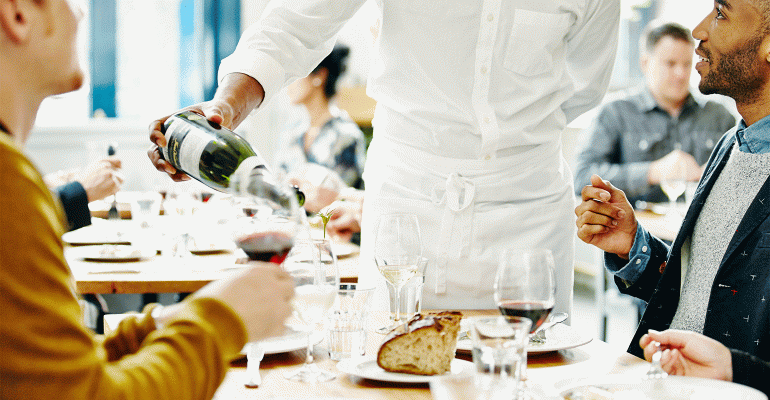So many events have occurred over the past couple of years that they have put all industries in a see-saw balancing act weekly. Situations like a cargo ship stuck in a canal, two countries at war, COVID's continued resurgence, and widespread labor shortages have caused so much disruption across the board that we’ve all needed to get very creative in our operations to navigate uncontrollable factors.
With inflation touching a 40-year high, many in the hospitality industry have been re-evaluating how their restaurants are operating. While the industry has seen steady price increases for more than a year, consumers didn't really become aware of this until around the beginning of 2022, as they saw some of the most significant increases occur during this time.
In restaurants, many of us have witnessed food costs on particular menu items increase by 20-30 percent in a relatively short time. For example, we have seen noticeable increases in the seafood markets for a year now, with not much relief. Some areas like produce and beef have gone up and down, but seafood has remained on an upward trend for more than a year.
For instance, in the fall of 2021, snow crab leg was $17 a pound; since then, it has reached as high as $79 a pound. Another example is Hamachi yellowtail fish, a popular item at our sushi concepts. We have seen the purchase price of this item at $8.80 a pound a year ago increase to as high as $19 a pound at the beginning of the year — an increase of over 100 percent.
As supply shortages aren’t going away soon, prices have continued to skyrocket.
An important question that we continue to ask ourselves is when does it make sense to take a price increase, eat the cost, or remove something from the menu?
We are constantly being very mindful of guest perception and value in our restaurants. We want to make sure our guests feel an appetizer or entrée price is justified by the quality, portion, and price on each item. We look at our menu items individually to make sure it all makes sense.
In the case of the snow crab leg that was mentioned, this was a simple decision to remove this from our menus. What we would have to charge our guests for the product we simply could not justify, and we feel ultimately that the guests would not find the value in it.
In the case of Hamachi yellowtail, we decided to increase the price on this fish by up to 30-35 percent on our menus and absorb the difference in cost. Hamachi yellowtail is a very popular item in our sushi concepts, and an item that we felt was important to continue to offer our guests.
Again, this is the balancing act that we do each week.
Like many, poultry has been another area that has increased dramatically in the purchase price. A year ago, we were paying just over $2 a pound for chicken breasts. Those same chicken breasts today are averaging $4.50 a pound. In this case, we decided to increase the cost of a chicken dish by 18-20 percent and absorb the difference. Because of the popularity of menu items like these, the guests and restaurants feel good about the changes that have been made.
As we began to increase menu prices in our restaurants in the fall of 2021, we received questions and feedback from our guests about the changes, but after we moved into 2022 and continued to adjust our menus and prices, we received fewer questions. As consumers began to see the changes by shopping in grocery stores, seeing news articles, and talking with friends, they became aware of the inflation challenges and how prices have changed overall.
Most people at this point understand what is happening with prices and have come to understand the situation we are all in. We continue to watch price trends weekly and will continue to adjust to give our guests the best product and value we can.
With all that being said, we are currently seeing our restaurants busier than ever, as people still want to enjoy themselves. There is something about being able to gather with friends, share a meal, and experience hospitality that we all have missed during covid shutdowns, and certainly we enjoy getting back to what feels like normal.
There is something great about a great meal and laughter with friends and family, and we love being a part of that.
AUTHOR BIO
As a financial operations leader for The Indigo Road Hospitality Group, Justin Shoener utilizes his more than 25-year hospitality career with his strength of fiscal review and insight. Like IRHG founder Steve Palmer, Shoener’s hospitality career began as a dishwasher and touched upon all integral roles within the restaurant, from server to general manager, allowing him an expansive understanding of the granular specifics of the operations. As a senior leader responsible for financial operations, Shoener works with restaurants on the back-end financials regarding cost of goods, P&L reviews, and efficient reporting. It’s not all about the numbers for him, however, as he thrives on mentoring employees to develop and grow in their hospitality careers as he experienced firsthand.





